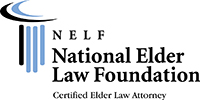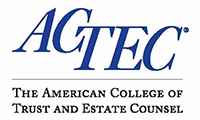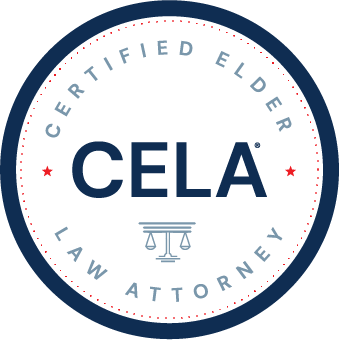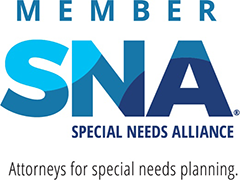Firm News
Inherited IRAs in Bankruptcy: New Pitfalls and Opportunities
The recent case of Clark v. Rameker, 134 S. Ct. 2242 (2014), the U.S. Supreme Court unanimously ruled that inherited IRAs do not qualify for the bankruptcy exemption afforded to a debtor's own retirement accounts. Heidi Clark and her husband filed for Chapter 7 bankruptcy and claimed an IRA that Heidi had inherited from her mother as exempt. Originally, the Wisconsin Bankruptcy Court ruled that Ms. Clark’s inherited IRA was not exempt as a retirement account. After winding through federal district court and the Seventh Circuit Court of Appeals, the U.S. Supreme Court heard the case. The Court unanimously ruled that inherited IRAs do not qualify for the bankruptcy exemption afforded to a debtor's own retirement accounts. The Court’s ruling was based on three factors differentiating between an inherited IRA and a beneficiary’s own IRA:
1. The beneficiary of an inherited IRA cannot make additional contributions to the account. An IRA owner, however, can make additional contributions to the account.
2. The beneficiary of an inherited IRA must take required minimum distributions from the account regardless of how old the beneficiary is. An IRA owner, however, can defer distributions at least until age 70 1/2.
3. The beneficiary of an inherited IRA can withdraw all funds anytime, for any reason, without a penalty. An IRA owner must generally wait until age 59 1/2 to take distributions without incurring penalties.
The Court’s Analysis
An analysis of these factors lead the Court to the very simple conclusion that an inherited IRA is money that was set aside for the original owner’s retirement but not the designated beneficiary’s retirement. For the Court, this distinction made the difference between treating the IRA as exempt or non-exempt under the Federal Bankruptcy Code.
Justice Sotomayor also included a bit of dicta hinting that there may be options when dealing with the IRA of a deceased spouse:
If the heir is the owner’s spouse, as is often the case, the spouse has a choice: He or she may “roll over” the IRA funds into his or her own IRA, or he or she may keep the IRA as an inherited IRA…
A State Matter (But Maybe Not in Colorado)
The Supreme Court's decision was based solely on the exemptions in the Federal Bankruptcy Code. Some states follow the exemptions in the Federal Bankruptcy Code, some have opted out and have their own exemptions. In Wisconsin, where Clark originated, the debtor had a choice of whether to use the exemptions provided by federal or state law (and in this case, the Clarks obviously chose the federal exemptions). Colorado has opted out of using the federal exemptions and has its own list of state exemptions. Under C.R.S. § 13-54-102, exemptions includes "property, including funds, held in or payable from any pension or retirement plan or deferred compensation plan..., any individual retirement account, as defined in 26 U.S.C. Sec. 408, any Roth individual retirement account as defined in 26 U.S.C. Sec. 408A”. So while Colorado has opted out of using the exemptions under the federal bankruptcy code, it relies on the federal bankruptcy code to define “retirement funds”. Given this, wealth advisors, trustees, and attorneys need to have a game plan when advising clients on how their gifts of IRA benefits to their beneficiaries may be at risk of being invaded by their beneficiaries’ creditors.
Another issue to consider—whether federal or state rules will apply depends upon the state in which the beneficiary lives when he or she declares bankruptcy.
Solution
Estate planners are always looking for legal and ethical opportunities to protect assets from creditors, especially when addressing assets that will be inherited and potentially subject to a beneficiary’s creditors. One of our tools is creating a trust for the beneficiary. However, as we know, a general rule is that naming a trust as a beneficiary of an IRA potentially sacrifices the ability to stretch distributions. Treasury Regulations do allow certain trusts in certain circumstances to be treated as designated beneficiaries eligible to stretch post-death RMDs over life expectancy, by looking through the trust to the underlying beneficiaries and using their life expectancies. The trust must qualify as a designated beneficiary under Treas. Reg. 1.401(a)(9)-4, Q&A-5 and 6: (1) the trust must be valid under state law; (2) the terms of the trust must be irrevocable, or by its terms, become irrevocable upon the death of the original IRA owner; (3) the trust’s underlying beneficiaries must be identifiable as being eligible to be designated beneficiaries themselves; and (4) a copy of the trust must be provided to the IRA custodian by October 31st of the years following the year of the IRA owner’s death.
Trust Options
There are two potential trust arrangements that can be considered designated beneficiaries that may be useful in protecting IRA assets from a beneficiary’s creditors in bankruptcy. The first is the conduit trust, described in Treas. Reg. 1.401(a)(9)-5, Q& A-7: if the trust requires that all required minimum distributions collected from the IRA will pass through directly and immediately to the underlying income beneficiary, only the income beneficiary’s life expectancy must be considered. This arrangement allows for all subsequent remainder beneficiaries to be ignored when determining the oldest life expectancy, but the trade-off is that the trust will not be able to accumulate any of the IRA’s RMDs for the subsequent beneficiaries. This trust may be favorable because taxation occurs at the individual level, subject to the individual’s tax brackets. However, because of its pass-through nature, the distributions will be prone to creditor claims and, perhaps, a spendthrift beneficiary’s compulsion to spend the entire distribution.
The second potential trust arrangement is an accumulation trust. An accumulation trust is any trust that can accumulate RMDs as they leave the IRA. This type of trust might not subsequently pass the RMDs through to the underlying beneficiaries until some later date. Unlike a conduit trust where the focus is on the life expectancy of the income beneficiary, an accumulation trust requires that RMDs be based upon the oldest beneficiary’s life expectancy (including remainder beneficiaries). Extra caution must be exercised when a remainder beneficiary is an estate or charity, in which case the entire balance of the IRA must be paid out within five years of the account owner’s death. Once the outright distribution is scheduled to occur, no subsequent beneficiaries must be considered for life expectancy purposes under Tres. Reg. 1.401(a)(9)-5, Q&A-7(c)(1). This type of trust, by its design, is more sheltered from creditor claims and certainly protects the spendthrift beneficiary. However, taxation may occur at the trust level if distributions are made to the beneficiary.
We Can Help
We regularly consult with fiduciaries who are assisting clients at various stages of estate planning. These trusts are tools for consideration when planning for IRA beneficiaries, but they are complex and should be undertaken only by an attorney who can listen to the client and understand the client’s most pressing concerns. We understand the rules regarding treating a trust as a designated beneficiary, we understand how to coordinate between the IRA rules and other trust drafting requirements (and consideration), and we assure clients that their gifts will be insulated to the greatest extent possible from creditor’s claims in bankruptcy.












